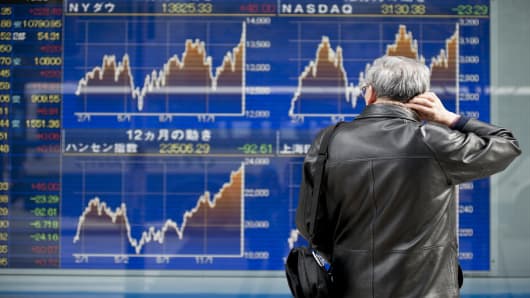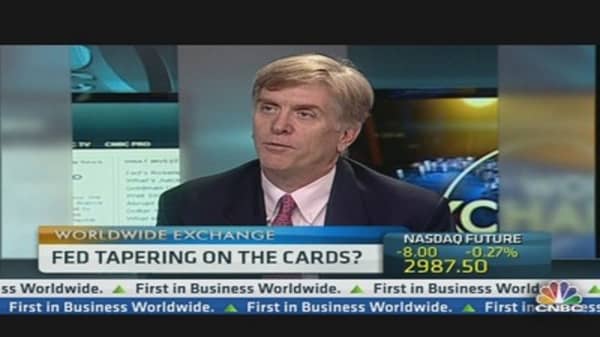Tokyo stocks have rallied since Abe began pushing his policies ahead of his December election victory. At the same time, the yield on the 10-year Japanese government bond has risen to near 1 percent, ending a rally in the government debt market that began in 2006.
Those developments have created a problem for GPIF, according to the people familiar with fund's deliberations.
The fund's exposure to domestic bonds has dropped to near the bottom of the allowable limit under its established portfolio. At the same time, the allocations for overseas and domestic equities have neared their maximum limits.
So without changes, the fund would be forced to buy weakening bonds and sell rising stocks. GPIF has not detailed its current risk and return profile, but fund management have used such projections as a benchmark to ensure that the public fund is not overexposed to riskier and more volatile assets.
(Read More: If Foreigners Are Net Japan Buyers, Who's Selling?)
GPIF manages a $1.1-trillion dollar portfolio equivalent to the size of the annual economic output of Mexico from a non-descript brown skyscraper in Tokyo's Kasumigaseki district. The fund, which is responsible for the retirement savings of Japanese government employees, has relied on a portfolio model that includes a 67 percent allocation for domestic bonds.
Its investment model went unchanged through the global financial crisis of 2008 and served the fund well through the years of slow growth in Japan since.
For the six years through March 2012, the pension fund's investment in yen bonds had returned 2.28 percent. By contrast, domestic stocks lost 9.43 percent over the same period.
A committee of 10 outside advisers that serve as the fund's investment committee have been reviewing GPIF's strategy. The committee has met three times since April.
Review Underway
GPIF Chairman Takahiro Mitani told Reuters in February that the public pension would review its long-term investment target and portfolio model, in part because it had already come under scrutiny by another public agency.
In October 2012, a report by Japan's Board of Audit had called on the pension fund to consider such a review. The board's 120-page report, which was commissioned by the then-ruling Democratic Party, questioned whether the GPIF portfolio targets remained relevant and whether they should be changed to better reflect considerations of investment risk.
The fund's long-term investment targets, reviewed every five years, must be approved by the health minister. The next review of that target is scheduled to start from next financial year in April 2014.
But GPIF is also allowed to change its investment targets during times of extraordinary market developments. The public fund reviewed its portfolio after the Lehman crisis in 2008 and the March 2011 earthquake and tsunami, but elected on both occasions to keep its targets unchanged.
But the sharp moves in financial markets over the past six months and the critical review by auditors have made fund administrators more serious about considering changes now, people familiar with the matter said.
(Read More: Can Japanese Investors Resist 2% Yields in US?)
The fund's model portfolio sets a core allocation of 67 percent for bonds, 11 percent for domestic stocks, 9 percent for foreign stocks and 8 percent for foreign bonds. The fund is allowed to keep allocations within a percentage range centered on those targets.





